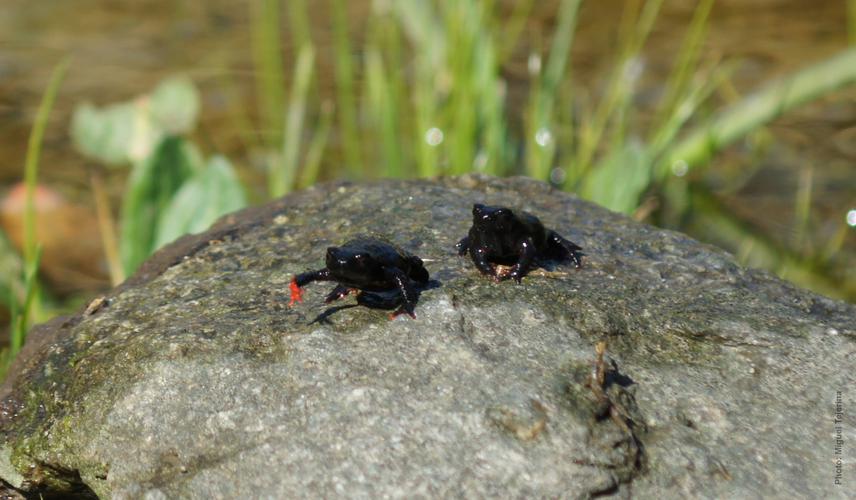Agustina Cortelezzi
Other projects
6 Nov 2013
Conservation Status Assessment of the Endemic Tandilean Red-Belly Toad - Phase II
The aim of the project is to assess the conservation status, distribution, population size and habitat requirements of the endemic Tandilean Red-belly Toad (Melanophryniscus sp.) in Tandil hills, Argentina.

Red belly toad. ©Miguel Tejerina
Several factors such as climate change, habitat loss, pollution and emerging diseases are contributing to the global decline of amphibian’s populations. The Tandilean Red-belly Toad (Melanophryniscussp.), an endemic species restricted to Tandil hills in Buenos Aires Province, is another case of amphibians decline in South America. The conservation status of this species has not been assessed as a result of the species has not been described yet. The Tandilean Red-belly Toad is a sensitive species of hill-grasslands. Habitat perturbations on its distribution range include urbanization, forestry, agriculture, and unplanned tourism. Some sporadic surveys conducted near to Tandil city reported a decline and a complete extinction in some areas where this toad used to be abundant or even occur. At this moment, only relict populations occur in few hills. Fragmentation of landscape isolated populations and it reduced the genetic crossing possibility; which could be affecting genotypic and phenotypic plasticity of Red-belly Toad. The hills system of Tandil has been declared “Grasslands Valuable Areas” for South America, but the number of protected areas is low and management actions were not developed yet. Attempts to protect Red-belly Toad populations will be successful only if the Conservation Status is assessed.
Our project combines research and conservation objectives. We will assess the taxonomic and conservation status, distribution and population size of relict populations of Tandilean Red-belly Toad in the hill system of Tandil. In order to establish the habitat requirements we will survey and monitor natural ponds used by Red-belly Toads. In order to avoid predation of tadpoles by dragonfly larvae we will conduct a pond enclosure experience on the field. We will determine if Chrytid fungus is present in the populations of Tandilean toads. Finally, we will develop an educational program using the Red-belly Toad as flagship species, and we will inform local people about the conservation situation of hill-grasslands, and the necessary actions to promote its conservation. With this work we will develop a set of concrete actions to promote the long last viability of this toad species and the conservation of relict fragments of Argentine Pampas, one of the few ecosystems of temperate prairies in the world, recognized as a conservation priority in the Neotropics.
The main results of educational program will be information about the ecology and conservation of Red-belly Toad. We will use this information to give talks in schools, local public university, NGO’s, and to publish notes in local media. We will develop some educational efforts addressed to both tourists and local inhabitants, as trail signs in hill roads, handcrafts, pamphlets, posters, etc. All the information gathered by the conservation project will be continuously updated in social networks (i.e. Facebook and twitter).